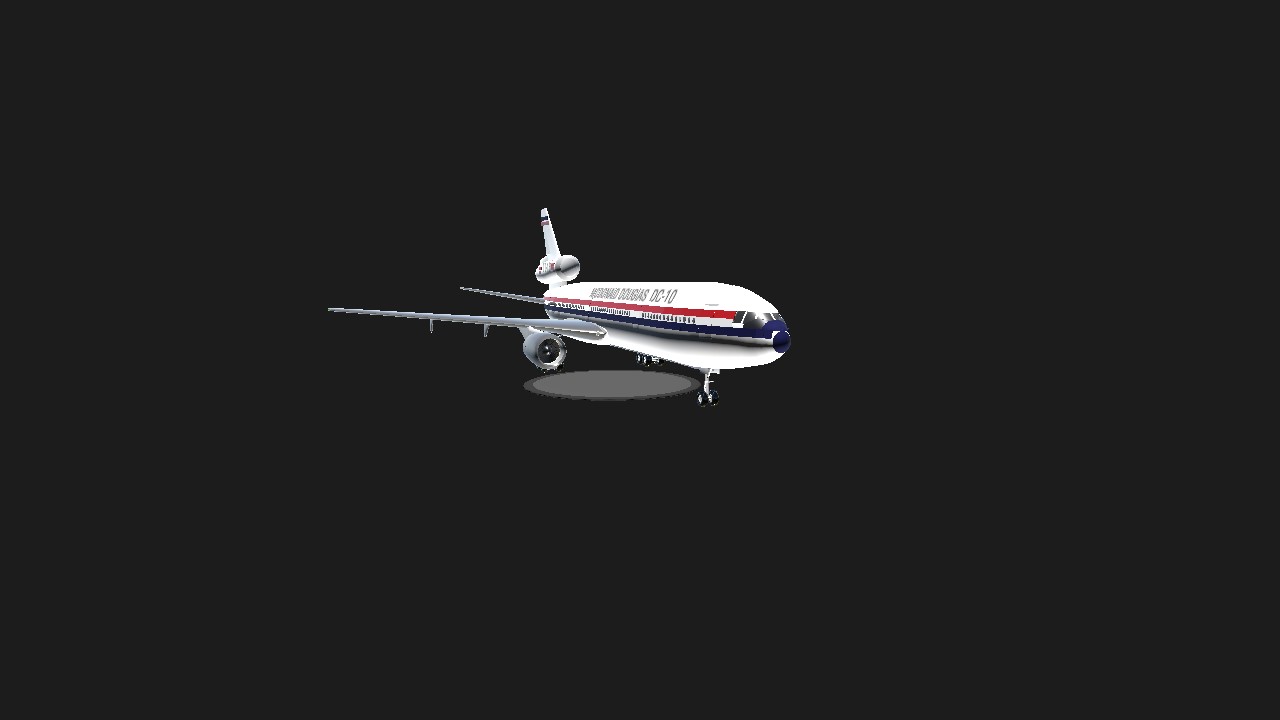1966, American Airlines proposed that in the 1970s, there was a need for a large passenger aircraft with good economic viability, airport facilities that met the prevailing standards at the time, and a passenger capacity of around 300 people. Douglas Company began researching solutions to meet this requirement. The initial design plan for the Douglas wide body aircraft was a twin engine under wing pod layout. With the lifting of the "60 minute limit" for three engine aircraft by the Federal Aviation Administration in 1964, which could perform transatlantic routes, and to ensure takeoff and landing on shorter runways, the Douglas design plan was changed to a three engine wide fuselage plan at the request of the customer. A third engine was added to the vertical tail root, which was the most prominent feature of the DC-10. The first prototype of the DC-10 was produced in July 1970, and it made its first test flight on August 29, 1970. On July 29, 1971, it obtained the FAA airworthiness certificate and was delivered to American Airlines. Its maiden flight was put into operation on August 5, 1971. fourView moreseventeenDC-10 Image AppreciationAfter the DC-10 was put into operation, it was found that there were some design flaws, the most serious of which was the cargo hold door design, which directly led to several accidents and required a redesign of the cargo hold door. By 1979, the DC-10 had been involved in two major air accidents within a year. At that time, aviation authorities demanded the grounding of DC-10 aircraft worldwide for safety reasons, which damaged the reputation of the DC-10 aircraft. Douglas Corporation and Lockheed Corporation each developed three engine wide body passenger planes, and in order to compete for the market, the two companies engaged in a lose lose competition. The DC-10, due to its lower operating and maintenance costs, ultimately defeated its competitor Lockheed's L-1011 Samsung passenger plane in terms of sales volume.Northwest Airlines DC-10With the arrival of the oil crisis, the cost of using three engine passenger planes has significantly increased. In the 1970s, Airbus began delivering the newly designed Airbus A300 wide body aircraft, equipped with two high bypass ratio turbofan jet engines that greatly improved performance. The relaxation of extended flight restrictions for twin engine aircraft has further expanded the route range of twin engine aircraft, allowing them to fly transatlantic flights. The A300 outperforms the L-1011 and DC-10 in terms of performance and operating costs, and is highly popular in the 250 seat wide body aircraft market. DC-10 gradually lost orders due to relatively high fuel consumption.The DC-10 was discontinued in 1989 and a total of 446 aircraft were produced (including 60 KC-10A military versions delivered to the US Air Force). The KC-10A military version was delivered on April 4, 1990. McDonnell Douglas introduced the MD-11, a derivative of the DC-10, in 1990. The operating cost and overall performance of MD-11 are still inferior to the new generation Airbus A330/340 and Boeing 777. DC-10 and MD-11 are mostly converted for full cargo use due to the advantage of three engine aircraft in maximum takeoff weight.
Specifications
General Characteristics
- Predecessor McDonnel Douglas DC-10-10 Turkish Airlines (mobile friendly edition)
- Created On Android
- Wingspan 165.4ft (50.4m)
- Length 181.7ft (55.4m)
- Height 59.3ft (18.1m)
- Empty Weight N/A
- Loaded Weight 154,826lbs (70,228kg)
Performance
- Power/Weight Ratio 0.983
- Horse Power/Weight Ratio 0.029
- Wing Loading 32.9lbs/ft2 (160.8kg/m2)
- Wing Area 4,700.5ft2 (436.7m2)
- Drag Points 26666
Parts
- Number of Parts 764
- Control Surfaces 9
- Performance Cost 3,901






